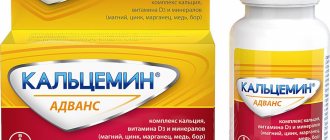Nosological classification (ICD-10)
- C85.0 Lymphosarcoma
- C92.1 Chronic myeloid leukemia
- C95.0 Acute leukemia of unspecified cell type
- E79 Disorders of purine and pyrimidine metabolism
- E79.0 Hyperuricemia without signs of inflammatory arthritis and gouty nodes
- E79.1 Lesch-Nychen syndrome
- L40 Psoriasis
- M10 Gout
- N19 Renal failure, unspecified
- N20.0 Kidney stones
- N20.9 Urinary stones, unspecified
- N22.8 Urinary tract stones in other diseases classified elsewhere
- T94.1 Consequences of injuries, unspecified by location
- Y42.0 Adverse reactions during therapeutic use of glucocorticoids and their synthetic analogues
- Z51.0 Radiotherapy course
- Z51.1 Chemotherapy for neoplasm
Indications for use of the drug Allopurinol
Diseases accompanied by hyperuricemia, including primary and secondary gout, urolithiasis (with the formation of urate), primary and secondary hyperuricemia, which occurs during pathological processes accompanied by increased breakdown of nucleoproteins and increased levels of uric acid in the blood, including various hemoblastomas (acute leukemia, lymphosarcoma, etc.), conditions during cytostatic and radiation therapy of tumors, psoriasis, massive therapy with corticosteroid drugs. There is evidence of the use of the drug in the complex treatment of epilepsy in children (increasing serotonin biosynthesis).
Compound
| Pills | 1 table |
| active substance: | |
| allopurinol | 100 mg |
| excipients: sucrose (refined sugar) - 20 mg; potato starch - 77.68 mg; magnesium stearate (magnesium stearate) - 1 mg; Edible gelatin – 1.32 mg |
| Pills | 1 table |
| active substance: | |
| allopurinol | 300 mg |
| excipients: lactose monohydrate (milk sugar) - 49 mg; MCC - 20 mg; sodium carboxymethyl starch (Primogel) - 20 mg; food gelatin - 5 mg; magnesium stearate - 4 mg; colloidal silicon dioxide (Aerosil) – 2 mg |
Side effects of the drug Allopurinol
Treatment with Allopurinol is usually well tolerated by patients. In case of gout, at the beginning of treatment, an exacerbation may occur due to the mobilization of uric acid from gouty nodules and other depots. In some cases, the following are possible: dyspeptic symptoms - nausea, vomiting, epigastric pain, diarrhea; allergic reactions - skin rash, itching, hyperemia, rarely - exfoliative dermatitis, fever, arthralgia; from the blood system - leukopenia, leukocytosis, eosinophilia; from the central nervous system - neuritis, sleep disorders, depression, amnesia.
Directions for use and doses
Inside, after meals, with plenty of water. The daily volume of urine should be more than 2 liters, and the urine reaction should be neutral or slightly alkaline.
Tablets, 100 mg
A daily dose of more than 300 mg should be divided into several doses.
Adults. The drug is prescribed for mild cases of the disease in a daily dose of 100–200 mg/day; for diseases of moderate severity - 300–600 mg/day; in severe cases - 700–900 mg/day. The dose of the drug is selected individually, the effectiveness of therapy is monitored at the initial stages by repeatedly determining the level of uric acid in the blood (desirable level <0.36 mmol/l). A decrease in uric acid levels under the influence of the drug occurs after 24–48 hours.
Reducing the risk of exacerbation of gout: treatment begins with a dose of 100–300 mg/day, with a weekly, if necessary, increase in dose by 100 mg/day.
Prevention of urate nephropathy during antitumor therapy: allopurinol is prescribed in a daily dose of 600–800 mg and treatment is continued for 2–3 days.
Recurrent oxalate kidney stones in patients with hyperuricosemia: the dose of the drug is 200–300 mg/day.
Children. From 10 to 15 years, 10–20 mg/kg/day or 100–400 mg/day are prescribed; up to 10 years - 5–10 mg/kg/day.
Special patient groups
Renal dysfunction. In patients with impaired renal excretory function, the daily dose of allopurinol should be reduced. During the first 6–8 weeks of treatment, regular liver function testing is necessary; for blood diseases, regular laboratory monitoring is required. For chronic renal failure, it is necessary to start with a daily dose of no more than 100 mg/day with an interval of more than 1 day, increasing it only if the therapeutic effect is insufficient. When added to uricosuric drugs, the dose of allopurinol is gradually increased, and the dose of uricosuric drugs is decreased. During treatment, it is necessary to ensure a daily diuresis of at least 2 liters, and maintain urine pH at a neutral or slightly alkaline level. When creatinine Cl >20 ml/min, usual doses of allopurinol are prescribed; with creatinine Cl <10–20 ml/min, the daily dose should not exceed 200 mg.
Tablets, 300 mg
Inside. The drug should be taken once a day after meals with plenty of water. If the daily dose exceeds 300 mg or symptoms of gastrointestinal intolerance are observed, the dose must be divided into several doses.
For initial therapy, allopurinol should be used in other dosages (100 mg) once a day. If this dose is not enough to adequately reduce the concentration of uric acid in the blood serum, then the daily dose of the drug can be gradually increased until the desired effect is achieved. Particular caution should be exercised if renal function is impaired.
When increasing the dose of allopurinol, it is necessary to determine the concentration of uric acid in the blood serum every 1–3 weeks.
Adults. The recommended dose of the drug is 300–600 mg/day for moderate cases; 600–900 mg/day for severe cases. The maximum daily dose is 900 mg.
Children. The recommended dose for children from 3 to 10 years is 5–10 mg/kg/day; from 10 to 15 years - 10–20 mg/kg/day. The daily dose of the drug should not exceed 400 mg.
Allopurinol is rarely used for pediatric therapy. The exceptions are malignant oncological diseases (especially leukemia) and some enzymatic disorders (for example, Lesch-Nychen syndrome).
Since allopurinol and its metabolites are excreted from the body by the kidneys, impaired renal function may lead to retention of the drug and its metabolites in the body with a subsequent prolongation of T1/2 of these compounds from the blood plasma. Allopurinol and its derivatives are removed from the body by hemodialysis. If hemodialysis sessions are performed 2-3 times a week, then it is advisable to determine the need to switch to an alternative therapy regimen - taking 300-400 mg of allopurinol immediately after completion of the hemodialysis session (the drug is not taken between hemodialysis sessions).
To adjust the dose of the drug, it is necessary to evaluate the concentration of uric acid salts in the blood serum, as well as the concentration of uric acid and urate in the urine, at optimal intervals.
Pharmacological properties of the drug Allopurinol
Allopurinol is an anti-gout drug that inhibits the synthesis of uric acid and its salts in the body. The drug has the specific ability to inhibit the enzyme xanthine oxidase, which is involved in the conversion of hypoxanthine to xanthine and xanthine to uric acid. As a result, the urate content in the blood plasma is reduced and their deposition in tissues and kidneys is prevented. When using the drug, the excretion of uric acid in the urine decreases and the excretion of more easily soluble hypoxanthine and xanthine increases. Allopurinol in the body is converted into alloxanthin, which also prevents the formation of uric acid, but is inferior in terms of activity to allopurinol. After oral administration, about 90% of the drug is absorbed in the digestive tract. The maximum concentration of allopurinol in the blood plasma is achieved on average after 1.5 hours. The half-life of allopurinol is 1–2 hours, alloxanthin is about 15 hours, so inhibition of xanthine oxidase activity can last for 24 hours after a single dose of the drug. About 20% of the dose taken is excreted in feces, the rest of the drug and its metabolites are excreted in urine.
Possible adverse reactions and symptoms of overdose
Adverse effects when taking Allopurinol can occur in various organs and systems, so side effects should be classified into groups:
- On the part of sensitive analyzers: visual impairment, amblyopia, allergic conjunctivitis, taste perversion.
- Gastrointestinal tract: dyspeptic syndrome, cholestasis, enlarged liver, hepatitis, hepatonecrosis.
- CVS: decreased heart rate, hypertension, vasculitis, pericarditis.
- From the central and peripheral nervous system: drowsiness or insomnia, paresis, disturbances in the emotional state, neuritis, paresthesia.
- Musculoskeletal system: pain in muscles and joints.
- Hematopoietic organs: anemia, thrombocyto-, leuko- and pancytopenia.
- From the urinary and reproductive systems: edema, increased urea concentration, nephritis, impotence, enlarged mammary glands, changes in libido, infertility.
An overdose of the drug is accompanied by weakness, dizziness and typical symptoms of poisoning (nausea, vomiting, loose stools). It is also possible to reduce the daily volume of urine excreted.
Indications and contraindications for taking Allopurironol
The main indications for prescribing the drug are the following conditions:
- Gout and kidney stones (pathologies accompanied by hyperuricemia).
- Psoriasis.
- Hemoblastoses (acute and chronic leukemia, lymphosarcoma).
- Urinary nephropathy and concomitant renal failure.
There are a number of absolute and relative contraindications to taking Allopurinol. The first include:
- Chronic kidney disease.
- Acute attack of gout.
- Pregnancy and breastfeeding period.
- Allergic reactions to one or more substances included in the drug.
- Hemochromatosis.
Relative contraindications are diabetes mellitus types 1 and 2, as well as arterial hypertension with high cardiovascular risk.
Special instructions for the use of the drug Allopurinol
It must be taken into account that on the 3rd–4th day after stopping Allopurinol, the indicators of uricosuria and uricemia return to the original, elevated level. Treatment should be long-term; an interval of more than 2-3 days between doses of the drug is undesirable. The drug should be used with caution in cases of mild renal failure (adults in a dose of no more than 0.2 g/day). During the use of Allopurinol, diuresis in adult patients should be maintained at a level of at least 2 l/day. It is necessary to ensure a neutral or slightly alkaline urine reaction to prevent the formation of stones. For this purpose, drugs that alkalize urine are used simultaneously with Allopurinol. To prevent possible attacks of gouty arthritis at the beginning of treatment, you can prescribe NSAIDs or colchicine (adults, 0.5 mg 3 times a day). At the beginning of treatment with Allopurinol, a systematic study of the functional state of the kidneys should be carried out.
Drug interactions Allopurinol
When treating hemoblastomas with antitumor drugs (methotrexate, mercaptopurine, etc.), it should be taken into account that the simultaneous use of Allopurinol not only inhibits the enzymatic oxidation of these drugs and enhances their antitumor activity, but also significantly increases toxicity. Doses of antitumor drugs in such cases should be reduced by 50%. Under the influence of Allopurinol, it is also possible to enhance the effects (including unwanted) of indirect anticoagulants, antipyrine, diphenine, theophylline, since their inactivation in the liver slows down. When used simultaneously with ampicillin drugs, the risk of developing a skin rash increases. Under the influence of thiazide diuretics, furosemide, ethacrynic acid, the antihyperuricemic effect of Allopurinol is weakened, since these drugs increase the level of uric acid in the blood plasma. Allopurinol should not be used in combination with iron-containing drugs due to the possible accumulation of iron in the liver.



